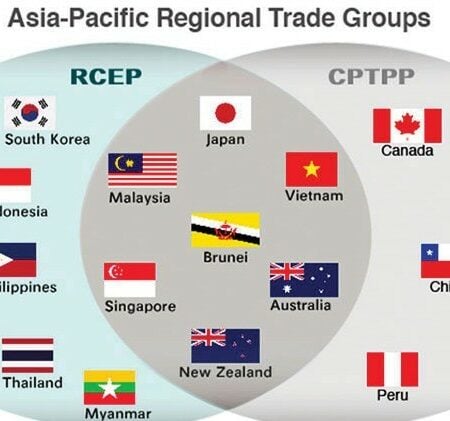
Many corporate vision statements don’t work. So what does?

Author: Chris Freund, Founder & Partner, Mekong Capital
However, in 2009, we emerged from the fog. As part of a broad organizational transformation program, we spent 14 days co-creating a vision. This meticulous and collaborative process resulted in a clear and effective vision statement that guided our path to success. The story of how we created that vision using an alignment process is covered in another blog post: The future is missing! How we spent 14 days creating it in 2009.
Around the same year, many of our investee companies started creating vision statements of their own: MobileWorld, Golden Gate, Phu Nhuan Jewelry, Traphaco, Vietnam Australia International School, and others. It soon became common practice among our investees to create their own vision statements.
Over the years, as more investee companies created their vision statements, it became clear that some vision statements were like brilliant lighthouses, guiding ships safely to shore, while others were like dimly lit lanterns, providing little direction in the vast ocean of business challenges.
Recently we decided to analyze the content of vision statements, themselves, to see if (and why) some are more effective than others.
You may be thinking that there are many other factors that determine the degree to which a company achieves its vision. And you would be right. But after many years of encouraging companies to create a vision statement and then watching what happened once that vision statement was declared, it became obvious that some vision statements are simply better than others when it comes to setting goals that will ultimately be achieved.
So Mekong Capital’s data science team, led by Dr. Phan Ho Tan Phat, embarked on an analytical odyssey, analyzing the vision statements of more than 30 current and past investee companies. The data science team separated out each phrase of each vision statement and then measured the extent to which each phrase was ultimately achieved or on track to being achieved. They searched for the key elements that would unlock the secret to success.
The results were illuminating – certain content in the vision statement made it substantially more likely that the company would achieve its vision, in some cases up to a factor of 5x, while some content was useless.
———
What kind of content in a vision statement is most likely to be achieved by the vision year? Here are nine questions that successful vision statements address.
How will they DIFFERENTIATE in their business model? The strongest and most effective vision statements make it very clear how the company will differentiate itself in its sector in a way that is a winning formula in the business they are in. For example, “We offer the widest assortment of pharmaceuticals where customers can reliably meet all of their needs for prescriptions and OTC medications.”
Is it about BUSINESS RESULTS and MEASURABLE? The most effective vision statements clearly state what business results will be achieved and how those will be measured. The focus on business results is in contrast with passive statements primarily about what people are experiencing or how they are feeling. The measures are stated as prominent features in the vision statement, rather than hidden away in some other file. For example, “We will operate a nationwide network of 1,000 pharmacies with an average EBITDA margin per store of 15%.”
How ACTIONABLE is it? The most effective vision statements are actionable. It makes it easy for managers and leaders to see the connection between their accountabilities and what actions they can take to contribute to the fulfillment of the vision. For example, “We listen to every customer and give them the best advice based on their needs” is highly actionable even by front-line employees. The key here is that the subject of the sentence is the company, which puts the company at the source, and is followed by an action verb. Contrast this with a phrase like “Our customers are the happiest”, or “We are the most trusted” which are passive outcomes and difficult for employees to translate into concrete action.
What do the CUSTOMERS want? While the vision statement is not written for customers and doesn’t need to be shared with customers, it works when the vision statement addresses the interests of customers in clear and precise terms – such as specifically how the company helps customers, what it solves for customers, even its brand positioning with customers. For example, “We are a student centric system of English language training centers in Vietnam, setting the highest standard for student engagement and most inspiring teachers.”
What DRIVES PERFORMANCE? While the Board of Directors and management teams normally want to deliver strong financial performance as measured by the company’s Profit & Loss statement, the most effective vision statements focus on upstream drivers of revenue or profit, or unit-level performance goals, rather than downstream outcomes like company-wide revenue or profit. This puts them at the source of taking the necessary actions to deliver strong performance. For example, “Our service is so extraordinary that we generate 80% of our new customers via referrals from our existing customers” – This company will have a higher lifetime customer value and lower customer acquisition costs than its competitors, and therefore be much more profitable.
Is it VIVID? The most effective vision statements are like vivid paintings, including images and details that are easy to visualize and understand, which makes it easy for humans to relate to them. This is in contrast with abstract concepts, which may sound interesting but humans may not know how to act upon these. Here is an example of a vision statement that makes it easy to envision what the company looks like in 2030:
We revolutionize the nutritional supplement retail experience by offering a cutting-edge selection of products based on the latest scientific discoveries, empowering our customers to achieve their health goals. By 2030, we will operate 500 stores globally, each featuring an expertly curated assortment that stays current with breakthrough research, ensuring our customers always have access to the most effective supplements. Our knowledgeable staff provides personalized, science-backed advice to customers, guiding them on their journey toward optimal health and well-being. Our commitment to providing the latest, most effective products and exceptional customer support fuels our growth, attracting 60% of our new customers through glowing referrals from our satisfied, health-conscious clientele.
Is it SPECIFIC? Rather than trying to be all-inclusive and leave many options open, the most powerful vision statements are focused, like a laser beam cutting through the noise and distractions, honing in on the company’s core priorities in several areas. The statement makes clear and unambiguous what the company will do well and therefore it is implicitly obvious where the company will NOT spend its time and resources. Like Michael Porter said: “The essence of strategy is choosing what not to do.” An example of specificity in a vision statement looks like this, “We save lives in developing countries by developing and making available the most affordable and reliable early cancer detection tests. In 2027, we’ve processed more than 5 million tests and reduced the cost per test by 70%, making it more affordable for a wider segment of people.”
Does it represent BREAKTHROUGH GROWTH while being ACHIEVABLE? The least effective vision statements are aspirational, with an intention to motivate and inspire team members towards some big goal that team members don’t authentically believe will be achieved. Just like a mirage that appears to be a promising oasis from a distance but vanishes upon closer inspection, an empty aspirational goal can seem alluring and achievable at first but ultimately lacks substance and feasibility, leaving those who pursue it disappointed and unfulfilled.
In contrast, the most effective vision statements may require breakthroughs in growth and performance but are both Achievable and declared with Integrity.
“Achievable” means the vision can be achieved by employees taking actions which are part of their jobs, while it may also require breakthroughs in their performance.
“Declared with Integrity” means that when they give their word to the vision, they will honor their word and do whatever it takes to fulfill that vision. Like a smoothly functioning machine, each gear interlocks perfectly with its counterparts, turning in harmony and relying on one another to fulfill their designated roles. Integrity serves as the foundation for trust and collaboration within a system, where each individual upholds their commitments and responsibilities, allowing the whole to function seamlessly and successfully towards the fulfillment of their shared vision.
How COMPREHENSIVE is optimal? Many companies, with an intention that the vision statement be easily memorable, try to squeeze everything into one sentence, which limits the number of distinct points that can be made. While this is common practice, we have found that this often backfires.
A successful vision statement is like a well-tuned symphony, with each essential component harmonizing to create a powerful and resonant performance. The most effective vision statements are sufficiently thorough to provide a very clear picture of several essential aspects of the company’s future – often putting attention on the top 3-5 most important goals or strategic priorities. And while this may be counter-intuitive, our data shows that it’s better to err on the side of too much vivid clarity on the goals rather than leaving people guessing. There is no downside to a vision statement that is up to a few paragraphs long.
In summary, a powerful vision statement is like a destination with a detailed road map, guiding your company through clear, actionable, and measurable goals that differentiate your business, address customer needs, and drive performance. It will include the 3-5 paramount objectives that are most important to achieve by the vision year. The journey may be challenging, but with a well-crafted vision statement, you can navigate the path to success with confidence and integrity.
April 11, 2023
[1] By “vision” we mean an organization’s goals for a specific point in time in the future, around which the whole organization is organized to deliver. This is different from “purpose” or “mission” which are an organization’s core commitments, which can be fulfilled in various ways, and are not time bound. For example, “Saving 100,000 lives by 2025” would be a vision statement but “saving lives” would be a purpose or mission statement. An organization’s purpose can be fulfilled through its current and future vision statements.
Click below to subscribe to Mekong Capital’s quarterly newsletter.
Mekong Capital makes investments in consumer-driven businesses and adds substantial value to those companies based on its proven framework called Vision Driven Investing. Our investee companies are typically among the fastest-growing companies in Vietnam’s consumer sectors.
In January 2022, Mekong Capital founder Chris Freund published Crab Hotpot, a story about a bunch of crabs who found themselves stuck in a boiling pot. The colorful cover of “Crab Hot Pot,” complete with expressive cartoon crustaceans, looks like a children’s tale at first glance. But as one continues reading, it becomes clear that the work has an important message about organizational transformation, leadership and focusing on a clear vision for the future.
The book is available on Tiki (Hard copy): bit.ly/38baF8a (Vietnamese) and Amazon: amzn.to/3yWunzG (English)






Leave a Reply